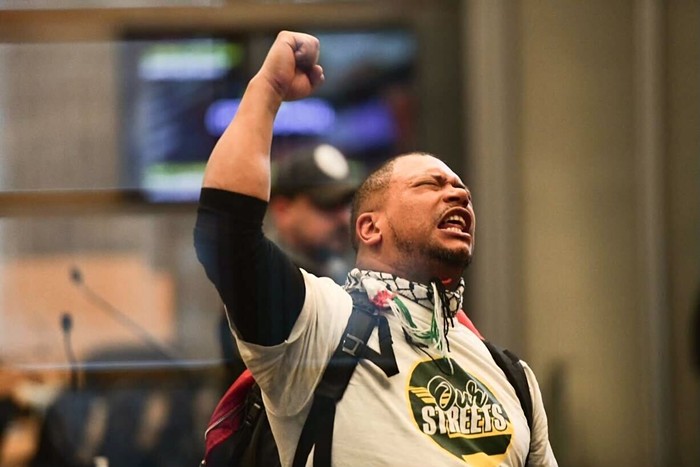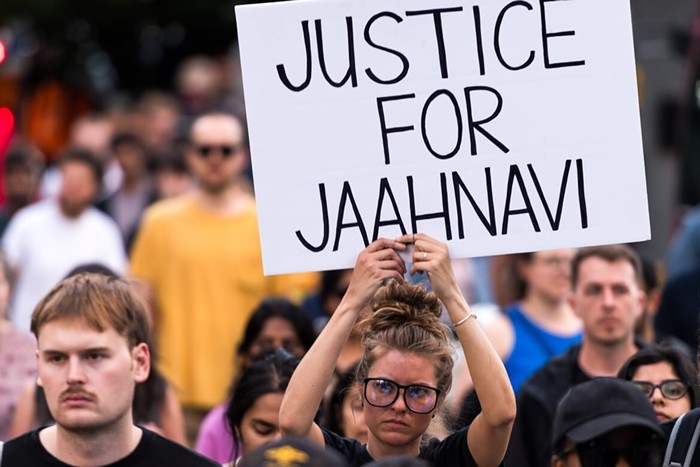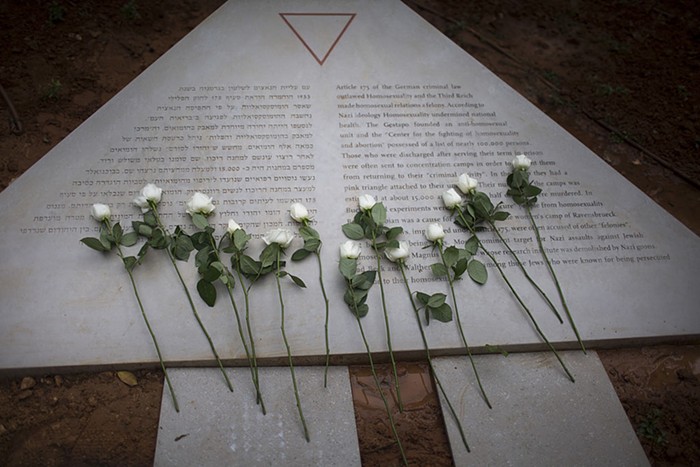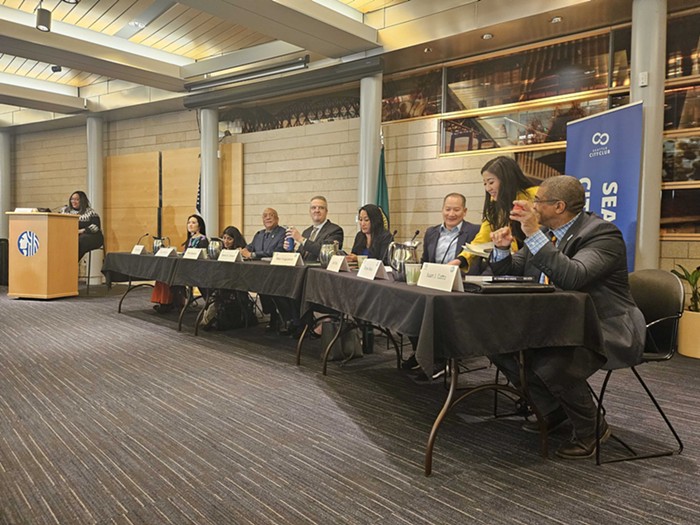
A city council effort to allow homeless encampments in residential areas of the city—killed a couple weeks ago by a sneaky effort from Tim Burgess and Jean Godden—is back and setting up some council suspense for Monday’s meeting.
First, let's recap: There are two decisions to watch here. One is the overall vote on tent encampments legislation, which looks almost sure to pass. (On this vote, we're only talking about the blue parts of that map above, and whether the council will allow tent encampments in those areas.)
Currently, tent encampments can operate without a permit on church land and can operate on other land, but only with a temporary use permit that lasts, at a maximum, six months. This new proposal would allow three new encampments, sanctioned by the city but run by social service agencies, on public or private land for a full year.
Council Member Nick Licata introduced a similar bill back in 2013, but that failed in a 5-4 vote. Then last fall, Mayor Ed Murray put together an “emergency task force on unsheltered homelessness,” and that group recommended allowing new encampments, arguing that while they're not a permanent solution for homelessness, they are a safer alternative for the people who are right now sleeping alone under bridges or in doorways. So the mayor got on board in a limited way: three new encampments, instead of the seven the task force recommended, and only in nonresidential areas. His support has given the bill momentum, even among those who voted against encampments in 2013. As Burgess told me back in January: “Any time any council member on any subject also has the mayor on their side, that's a very significant factor.” This is progress!
Then came Council Member Kshama Sawant with an attempt to push the council even further. Murray's office claims encampments shouldn't be allowed in residential areas because those parts of town are too far from social service providers and good transit stops. Sawant and a vocal chorus of homeless advocates who've testified at recent meetings have criticized that limitation as “redlining."
So this is the second vote to watch. Think of this as the decision about the yellow parts of that map. It's a proposed amendment from Sawant that would direct the city to do a study of the potential environmental impacts of allowing encampments on residential land.
This amendment is the thing that's got people in city hall counting votes. Its failure isn't likely to doom the whole bill, but it does create a little controversy, which the mayor's office does not like. And its passage would be the first step toward making it easier for nonprofits interested in hosting encampments to find spots to do that. Also, isn't it just kind of shitty to have a blanket rule preventing people who are homeless from living in the areas where the rest of us live, even if those areas might be right for—and willing to host—tent encampments?
Just to reiterate one more time: This amendment from Sawant is talking about a study, not an actual change to allow encampments in neighborhoods. Even if this passes, the city will move forward with the plan as Murray has outlined it—allowing three new encampments in commercial and industrial areas—while it studies the possibility of allowing them in other areas. Then, later, after the study is done, the council would have to vote again on actually allowing them in residential areas. Isn't that where council members, armed with the results of the study, could best take their stands on the actual policy question at hand?
Anyway, Burgess and Godden, along with Council Member Sally Clark, killed Sawant's amendment in that committee meeting earlier this month, so now Sawant is bringing it back at the full council meeting next week. Here’s where things stand:
Expected to vote yes on the amendment: Sawant, Licata, Mike O’Brien
Expected to vote no (because, duh, they already did): Burgess, Godden, Clark
Not saying a goddamn thing, but assumed to be voting no: Tom Rasmussen. I’ve called and e-mailed his office about this and gotten no answer about where he stands. Sawant’s and O’Brien’s offices both say they haven’t heard anything either. But Rasmussen voted against the 2013 encampment bill, which didn't include residential areas, so it’s hard to imagine him coming around on allowing them in residential zones now.
That’s looking like 4-3 on a nine-member council, which means...
Swing votes! Sally Bagshaw and Bruce Harrell are the wild cards here. They both supported the tent encampment bill in 2013, but they’re also up for reelection in their districts, and it’s been unclear how much they might fear being perceived as the candidate trying to bring a tent city to your neighborhood. (For what it’s worth, O’Brien and Sawant are also running for district seats.) But recently Bagshaw and Harrell have given indications that they are voting “yes.”
In a March 9 e-mail to Sharon Lee, director of the nonprofit Low Income Housing Institute and a member of the mayor’s homelessness task force, Bagshaw wrote simply: “I do support Kshama’s amendment.” Her office says that's still true, barring any changes.
When I asked Harrell where he was on this a couple weeks ago—and when I asked his office about it again on Tuesday—he wouldn’t commit one way or the other. But Lee says she saw him last week and he “indicated he supports it and said, ‘What’s the harm [in a study]?'”
That's not exactly a ringing endorsement, but it still looks good for Sawant—if Bagshaw and Harrell stick to their word. The vote is Monday at the council's 2 p.m. meeting.
This story has been updated since its original publication.


















